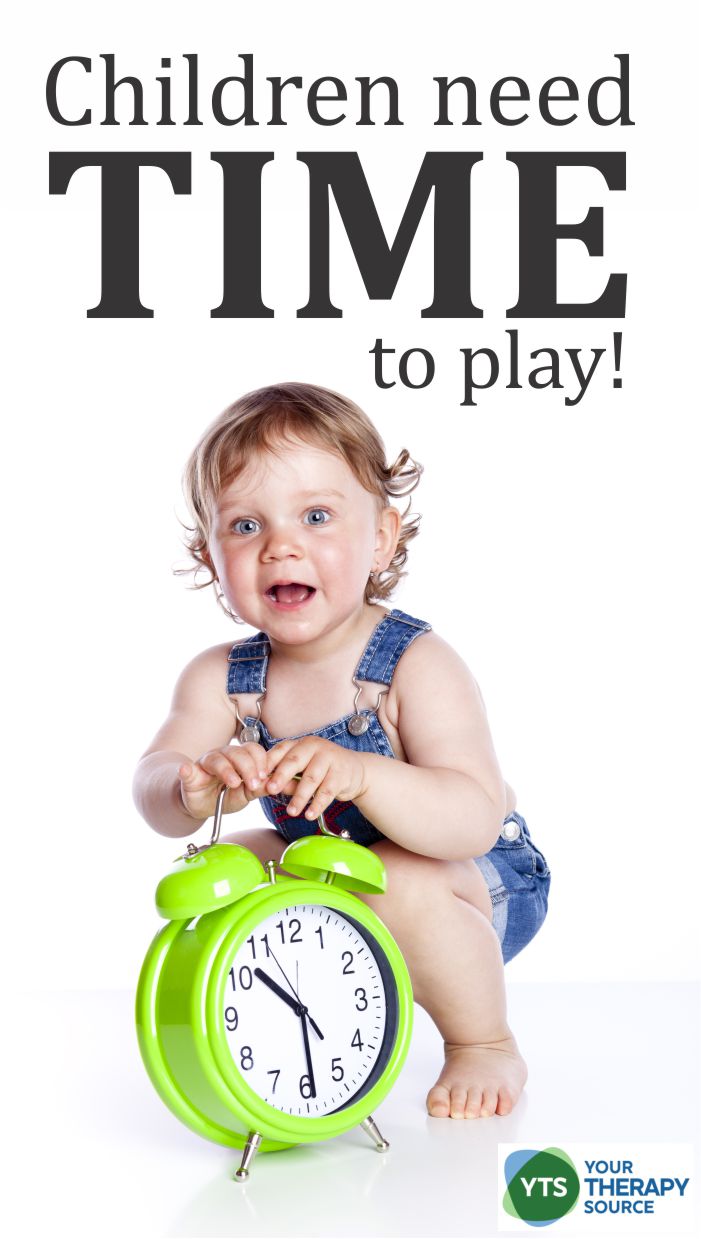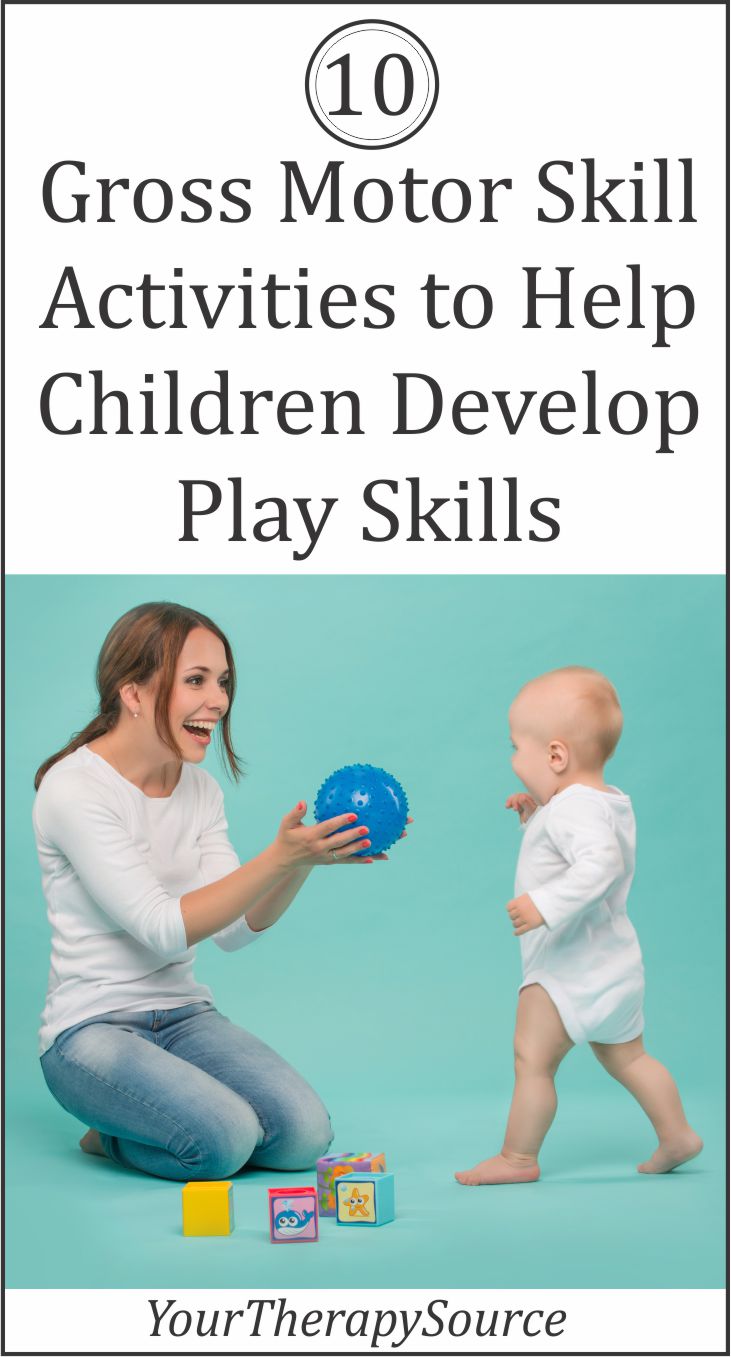Gross Motor Skill Activities to Help Children Develop Play Skills

Fred Rogers once said, “Play is often talked about as if it were a relief from serious learning, but for children,
Gross Motor Skill Activities – Musical Play
Musical play can encourage babies to move in infancy. Provide different musical experiences for babies even right after birth to facilitate motor responses. Try music with different tempos – slow music, fast music, calming music, etc.
Singing with your own voice seems to have the greatest impact on infant behavior (Eckerdal, 2009).
Gross Motor Skill Activities – Toy Selection
Choosing the correct toy is crucial to help children develop play skills. Children need to move to learn therefore static toys where children only have to press one button for a high level of sensory stimulation do not encourage children to explore their environments.
Simple toys are excellent to promote children to use their imagination, be creative, problem solve and interact with caregivers. For example, blocks and balls are excellent choices to encourage motor skill development and play.
Even infants show a preference for certain kinds of toys and will display higher levels of play when using preferred toys. If necessary, change the selection of toys in the home or classroom to increase the interest of the baby or child (Schneider, 2009).
Gross Motor Skill Activities – Space to Move
Children need space to move and explore their environments to learn how to play. This means making sure that young babies do not spend too much time in confining equipment such as baby swings, car seats, and exercise saucers. Create a safe space for little ones to have the freedom to move.
Babies not yet crawling should spend play time on their stomachs on the floor with preferred toys and people/peers near them. Babies who are walking should be provided with ramps, mats, pillows, and other surfaces and objects to walk over or around.
Gross Motor Skill Activities – Just Right Equipment
Provide open-ended equipment that has many uses and can be used by children of different levels of play ability. Play equipment that is too challenging, not challenging enough, or not related to children’s play interests will not help children develop a sense of mastery in their motor play (Martin, 2000).
Gross Motor Skill Activities – Vestibular Input
The vestibular system tells the brain about where the head is in space and how the body is moving through space. In simple terms, it is responsible to provide information regarding movement and balance. It is located in the inner ear where it receives input from the other senses such as visual, tactile, and auditory information. It receives and sends signals regarding
rotational (circular) and linear (straight) movements.
Children use vestibular input to maintain upright posture, balance and move through space. It also provides information as to whether things around you are moving. These are all important skills for playtime.
Offer vestibular input activities such as swings, scooter boards, ride on toys, bicycles, etc. to help children learn to process movement sensations. Children need to learn how to move in different directions and speeds while controlling their bodies. These skills are necessary for playtime with large movement group games.
Gross Motor Skill Activities – Proprioceptive Input
Proprioception is the ability of your muscles and joints to determine where they are in space. The proprioceptive nerve endings in the body provide us
with information of where our hands, arms
Encourage children to try proprioceptive activities such as pushing/pulling wagons, lifting heavy objects, jumping games like hopscotch, trampolines, stop/start, etc. to help children with grading motor skills during play.
Gross Motor Skill Activities – Body Awareness
Body awareness is the ability to recognize where your body is in space. Your muscles and joints send your brain information about your body and how it moves. Body awareness helps us to understand how to relate to objects and people at home, at school and outdoors. For example, proper
body awareness tells us how far to reach for objects or how close to
Children need to practice body awareness skills during child development. Exploring the environment helps children to understand how to move over, under and around objects during play time. Games such as Simon Says or Move Like Me help children learn body awareness. To make the challenges more difficult, playing in the dark (ie under a blanket or a glow in the dark hunt) help children to develop body awareness without visual input.
Gross Motor Skill Activities – Motor Planning
Motor planning is the ability to create an idea, plan an action and execute that action. It is a complex process that requires cognitive thought, sensory input, and motor action. AND LOTS AND LOTS OF PRACTICE!
To help children with motor planning skills, let them formulate play ideas, select objects and create play activities rather than providing a structured play environment. Encourage children to play with open-ended toys such as balls and hula hoops.
Gross Motor Skill Activities – Adapt Equipment
Parents, therapists, and teachers need to closely observe children during playtime. If a child is struggling with their gross motor skills with a certain toy or game, could something be adapted to make them more successful? It could be as simple as toy placement i.e. putting the toy on a lower shelf or on the right side of the child instead of the left side. If necessary, provide adaptive equipment for children with physical disabilities to engage in active play and facilitate free movement.
Gross Motor Skill Activities – TIME

The most important gross motor skill activity is not an activity suggestion. Children need TIME to develop the gross motor skills necessary for play. Adults need to MAKE time and provide at least 60 minutes per day for unstructured, active play!
References
Eckerdal, P., & Merker, B. (2009). Music and the “action song” in infant development: An interpretation. In S. Malloch & C. Trevarthen (Eds.), Communicative musicality: Exploring the basis of human companionship (pp. 241-262). New York: Oxford University Press.
Martin, E. (2000). Developmentally appropriate equipment: What does that mean? Teaching Elementary Physical Education, 11(6), 5-8.
Schneider, E. (2009). Longitudinal observations of infants’ object play behavior in the home context. OTJR: Occupation, Participation and Health, 29, 79-87.
Need activities to encourage motor skill development in young children?
Play – Move – Develop: 100 reproducible games and activity ideas to encourage motor skill development and learning in children. A great resource for fun, home exercise program activities.
Therapeutic Play Activities for Children digital download includes 100 play activity pages and 12 tip sheets. The play activities encourage the development of fine motor skills, bimanual skills, rolling, crawling, tall kneeling, standing balance and cruising with a strong focus on children with cerebral palsy. FIND OUT MORE INFORMATION.






